Celtic Sea Salt VS Dead Sea Salt has been a topic of much debate, as both salts offer unique properties and benefits. Salt has been an essential part of human civilization for centuries, from enhancing food flavors to offering therapeutic benefits. But when it comes to choosing between Celtic Sea Salt and Dead Sea Salt, it can be a bit confusing. Each salt has unique properties that make it stand out. In this article, we will explore the differences between Celtic Sea Salt and Dead Sea Salt, comparing their benefits, mineral compositions, and uses.
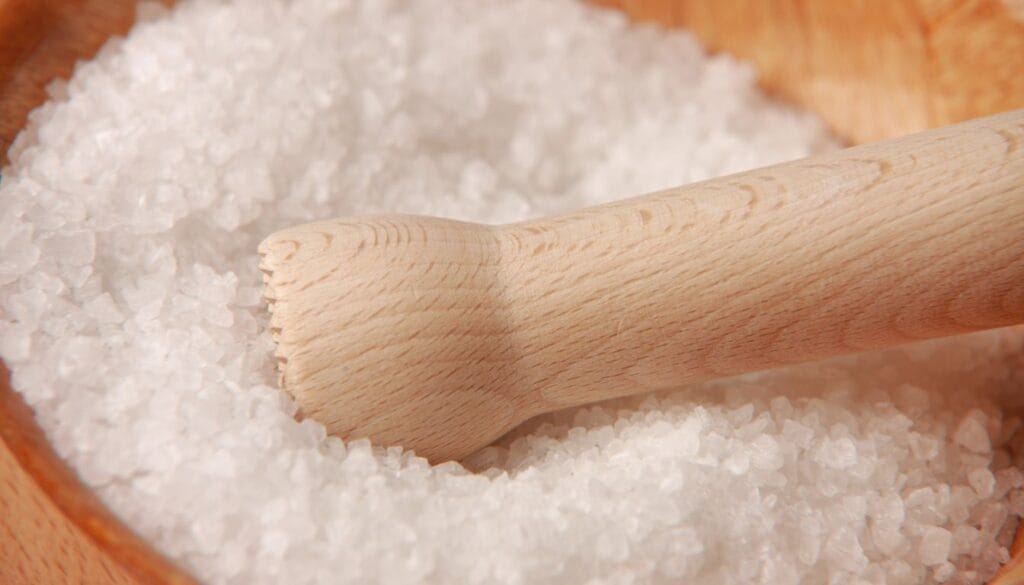
The Salt of Life: Celtic Sea Salt vs. Dead Sea Salt
Salt is more than just a seasoning—it’s a vital component for human health. Whether you’re using it in cooking, skincare, or therapeutic baths, salt provides an array of health benefits. However, not all salts are the same, and each type has its own unique properties.
When comparing Celtic Sea Salt vs. Dead Sea Salt, both salts offer significant health benefits, but they come from different sources and are often used for different purposes. In this guide, we’ll help you decide which salt is best for you based on its uses, mineral content, and health benefits.
What is Celtic Sea Salt?
Product | What It Looks Like | Where To Buy It |
Minera Dead Sea Salt, 100% Pure & Natural, 5 lbs |  | |
Le Marinier French Sea Salt Grey Coarse |  |
Origin and Harvesting Method: Celtic Sea Salt vs. Dead Sea Salt
Celtic Sea Salt is a premium unrefined salt that is harvested naturally from the coastal regions of Brittany, France, specifically from the Celtic Sea. This traditional harvesting method, known as solar evaporation, involves drawing seawater into shallow ponds, where the water naturally evaporates under the sun’s heat, leaving behind the salt. This natural process ensures that the salt retains its rich mineral content, unlike regular table salt, which often undergoes extensive refining to strip it of its beneficial properties.
What makes Celtic Sea Salt particularly special is that it is hand-harvested with minimal interference, using wooden tools to maintain the purity of the salt. This method, passed down through generations, allows the salt to absorb beneficial minerals from the clay lining the ponds as it crystallizes. The result is gray salt, also known as sel gris in French, which is prized for its unique color and rich mineral profile.
In the context of comparing Celtic Sea Salt vs. Dead Sea Salt, it’s important to note that while both salts come from bodies of water with high mineral content, Celtic Sea Salt is harvested from oceanic waters using a traditional solar evaporation method, whereas Dead Sea Salt is collected from a lake with extremely high salinity and mineral concentrations. Both salts provide distinct health benefits, but Celtic Sea Salt is especially renowned for its ability to retain trace elements during the harvesting process.
Mineral Composition: Celtic Sea Salt vs. Dead Sea Salt
Celtic Sea Salt is particularly well-known for its high mineral content, which makes it stand out from other salts, such as table salt. It is rich in a variety of trace elements that play vital roles in supporting overall health.
- Magnesium: One of the standout minerals in Celtic Sea Salt is magnesium, which is essential for muscle relaxation, nerve function, and stress reduction. Magnesium helps to improve circulation, prevent cramps, and promote relaxation, which makes it a great addition to baths for calming the body and mind.
- Calcium: Like magnesium, calcium is important for strong bones and teeth and plays a critical role in muscle function, blood clotting, and nerve transmission. This makes Celtic Sea Salt particularly beneficial for supporting bone health and overall skeletal integrity.
- Potassium: Potassium helps regulate the balance of fluids in the body and supports muscle contractions and nerve function. It works in synergy with magnesium to promote electrolyte balance and heart health.
- Iron: The presence of iron in Celtic Sea Salt makes it a valuable addition to the diet, as iron is essential for carrying oxygen throughout the bloodstream and maintaining overall cellular function.
- Zinc: Zinc plays a role in immune function, wound healing, and skin health. It also supports the senses of taste and smell.
In comparison to Dead Sea Salt, which is known for its high concentration of magnesium and sodium chloride, Celtic Sea Salt offers a wider variety of trace minerals, making it a more nutrient-dense option for culinary and health purposes.
Uses of Celtic Sea Salt: Celtic Sea Salt vs. Dead Sea Salt
Culinary Uses: Celtic Sea Salt vs. Dead Sea Salt
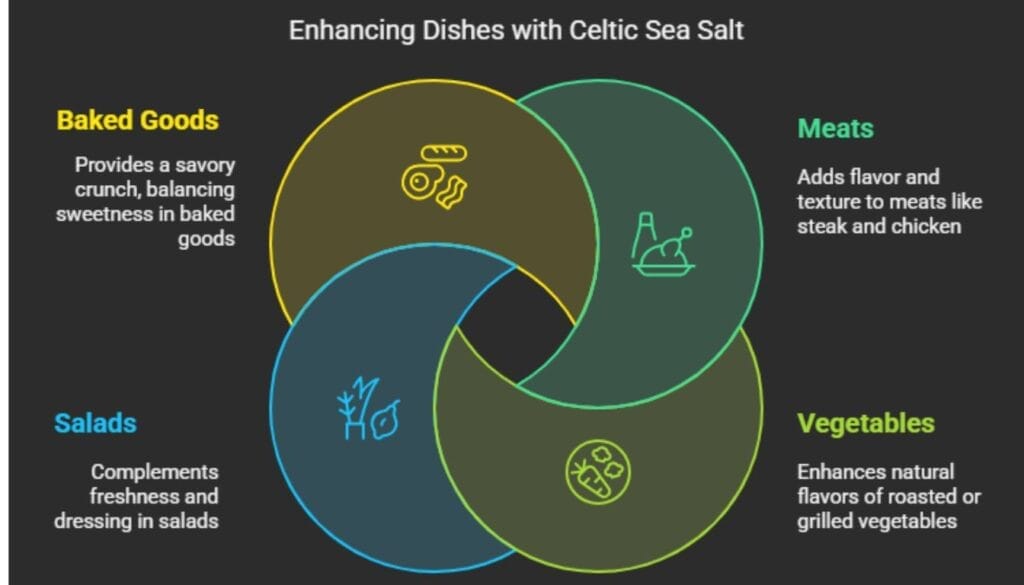
Celtic Sea Salt is prized for its robust flavor and coarse texture, making it an excellent finishing salt for a variety of dishes. The minerals in Celtic Sea Salt contribute to a more complex and deeper flavor profile, setting it apart from regular table salt. Some of the best ways to use Celtic Sea Salt include:
- Meats: Sprinkle on meats like steak, chicken, or roasted lamb to add a burst of flavor and texture.
- Vegetables: Use it to season roasted or grilled vegetables to enhance their natural flavors.
- Salads: A light sprinkle on salads helps bring out the freshness of the ingredients and complements any dressing.
- Baked Goods: Celtic Sea Salt adds a savory crunch to breads or pastries, offering a delicate balance to the sweetness of certain baked goods.
Because Celtic Sea Salt is less processed than regular table salt, it retains much of its original minerals and flavors, making it a healthy and flavorful alternative to refined salt.
Bath and Skin Care: Celtic Sea Salt vs. Dead Sea Salt
The mineral-rich composition of Celtic Sea Salt also makes it a great addition to bath soaks. Many people use it in their bath to relieve muscle soreness, reduce stress, and improve overall skin health. The high concentration of magnesium is especially beneficial for relaxation and soothing tired muscles after a long day.
You can easily create a mineral-rich bath by adding Celtic Sea Salt to warm water. The minerals will help detoxify the body, reduce tension, and nourish the skin. Compared to Dead Sea Salt, which is more commonly used for skin care treatments, Celtic Sea Salt is gentler and perfect for an all-around relaxing experience.
What is Dead Sea Salt?
Origin and Harvesting Method: Celtic Sea Salt vs. Dead Sea Salt
Dead Sea Salt is one of the most unique and revered salts in the world, known for its exceptional mineral composition and therapeutic properties. It is harvested from the Dead Sea, a saltwater lake located in the region between Israel, Jordan, and Palestine. Unlike regular seas or oceans, the Dead Sea is a salt lake, which means that it has no outlet—water flows in but does not flow out. As a result, the water that enters the Dead Sea becomes increasingly concentrated with salt and minerals over time.
The Dead Sea is one of the saltiest bodies of water on Earth, with salt levels ranging from 30% to 35%—up to 10 times saltier than typical seawater. This high salinity creates a highly mineralized environment, giving Dead Sea Salt its unique properties. The lake’s water is so rich in minerals that it has been used for thousands of years for its healing and therapeutic benefits.
The salt is harvested through evaporation. Water from the Dead Sea is channeled into shallow pools where the water naturally evaporates due to the extreme heat of the region. This process leaves behind the salt and other minerals. Dead Sea Salt is then carefully collected by hand, ensuring that it retains its mineral content without excessive refinement.
This natural method of solar evaporation has been used for centuries, and it is one of the reasons why Dead Sea Salt is so highly prized for its unrefined mineral-rich properties.
Mineral Composition: Celtic Sea Salt vs. Dead Sea Salt
The unique composition of Dead Sea Salt is what sets it apart from most other salts. It is rich in magnesium, calcium, potassium, sodium chloride, and other trace minerals like bromine and sulfur. These minerals are found in much higher concentrations in Dead Sea Salt than in sea salts or even Himalayan pink salt.
- Magnesium: The standout mineral in Dead Sea Salt is magnesium, which makes up a large portion of its mineral content. Magnesium is vital for many bodily functions, including muscle and nerve function, regulating blood pressure, and supporting a healthy immune system. Magnesium is particularly beneficial for the skin, where it helps reduce inflammation, support skin barrier function, and alleviate conditions like psoriasis and eczema. Research shows that magnesium helps increase the skin’s natural hydration and may promote better cell turnover.
- Calcium: Another important mineral in Dead Sea Salt is calcium, which is essential for maintaining strong bones and teeth. Calcium is also involved in muscle function and plays a role in maintaining the health of skin cells. It helps maintain the skin’s barrier function and supports the regeneration of new skin cells.
- Potassium: Potassium is crucial for regulating fluid balance in the body. It helps maintain proper hydration levels in the skin, ensuring it remains supple and soft. Potassium also plays a role in maintaining proper muscle function and reducing the risk of cramping.
- Sodium Chloride: While Dead Sea Salt contains sodium chloride (the same component as regular table salt), its concentration is much lower than in other salts. Sodium chloride is essential for maintaining fluid balance in the body, but because of the high concentration of other minerals, Dead Sea Salt is far less irritating to the skin than table salt.
Other trace elements in Dead Sea Salt include bromine, sulfur, zinc, and iodine. These elements contribute to the salt’s anti-inflammatory, detoxifying, and healing properties. Bromine is known for its calming effect on the skin and can help soothe irritation, while zinc promotes wound healing and reduces oxidative stress on the skin.
Uses of Dead Sea Salt: Celtic Sea Salt vs. Dead Sea Salt
Dead Sea Salt is predominantly used for its therapeutic benefits, particularly in the areas of skincare, muscle relaxation, and detoxification. It’s often found in bath salts, soaps, body scrubs, and cosmetic treatments. Below are some of the most common uses:
Therapeutic Uses: Celtic Sea Salt vs. Dead Sea Salt
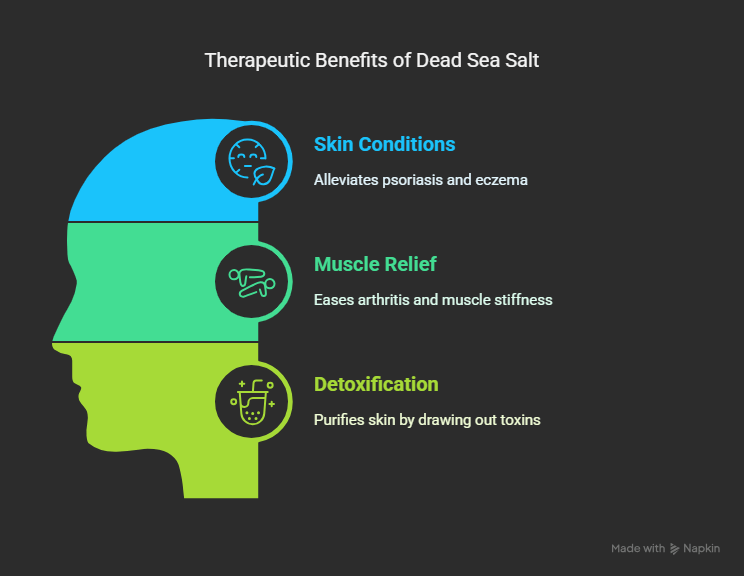
- One of the most famous uses of Dead Sea Salt is for soaking in a bath to alleviate a variety of skin conditions and muscle discomfort.
- Psoriasis and Eczema: Dead Sea Salt has been proven to have significant effects on treating skin conditions like psoriasis and eczema. The high concentration of magnesium and other minerals in Dead Sea Salt helps to reduce inflammation and irritation on the skin. Studies show that bathing in Dead Sea Salt can improve skin hydration and reduce the severity of these conditions by soothing affected areas and promoting healing.
- Arthritis and Muscle Relief: Soaking in a Dead Sea salt bath can help relieve the pain and discomfort associated with arthritis, muscle stiffness, and joint pain. The magnesium in the salt has muscle-relaxing properties, which can ease tension and reduce pain. Dead Sea Salt is often recommended for people who suffer from chronic muscle aches or fibromyalgia due to its ability to reduce muscle spasms and inflammation.
- Detoxification: Dead Sea Salt baths are known for their detoxifying properties. The minerals in the salt draw out impurities from the skin and help the body rid itself of toxins. The high concentration of sulfur and bromine works to purify the skin, leaving it feeling refreshed and rejuvenated.
Skincare: Celtic Sea Salt vs. Dead Sea Salt
Dead Sea Salt is widely used in skincare products due to its hydrating and detoxifying effects. Many cosmetic companies incorporate Dead Sea Salt into facial scrubs, body lotions, and cleansers for its ability to improve skin texture and appearance.
- Skin Hydration: The magnesium in Dead Sea Salt helps to increase skin hydration by improving the skin’s ability to retain moisture. This makes it beneficial for people with dry, sensitive skin.
- Anti-Aging Properties: The minerals in Dead Sea Salt support skin regeneration and may help reduce the appearance of fine lines and wrinkles by encouraging cell turnover. This makes it a popular ingredient in anti-aging skincare products.
- Exfoliation: Dead Sea Salt is often used as a natural exfoliant in body scrubs. The coarse texture helps to slough off dead skin cells, leaving the skin smoother and more radiant.
- Acne Treatment: The sulfur and zinc content in Dead Sea Salt can help reduce acne outbreaks by controlling oil production and improving skin clarity. These minerals also help soothe inflamed, acne-prone skin.
Mineral Comparison: Celtic Sea Salt vs. Dead Sea Salt
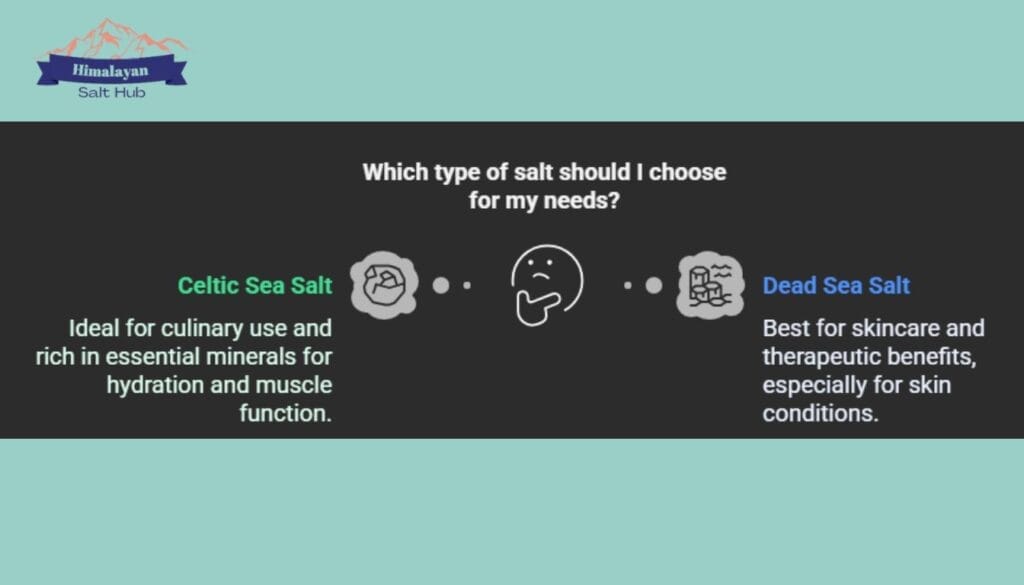
Celtic Sea Salt
- Rich in magnesium, calcium, potassium, and iron
- Contains essential trace elements for hydration, muscle function, and nerve health
- Provides a natural, unrefined alternative to regular table salt
- Ideal for culinary uses due to its full-bodied flavor and coarse texture
Dead Sea Salt
- High in magnesium, calcium, potassium, and sodium chloride
- Known for its therapeutic properties, especially for skin conditions like psoriasis and eczema
- Primarily used in bath salts and skincare products for its skin-hydrating benefits
- Its high magnesium content supports joint and muscle health
While Celtic Sea Salt is an excellent choice for those seeking a mineral-rich salt for cooking, Dead Sea Salt is better suited for people looking to enhance their skin care routine or manage conditions like psoriasis and eczema. – Celtic Sea Salt vs. Dead Sea Salt.
Health Benefits: Celtic Sea Salt vs. Dead Sea Salt
Celtic Sea Salt vs. Dead Sea Salt: offer valuable health benefits, but they serve different purposes.
Celtic Sea Salt
- Magnesium: Vital for muscle function, nerve health, and stress reduction
- Hydration: Helps maintain electrolyte balance in the body, promoting better hydration
- Lower Sodium: Contains less sodium than table salt, making it a better option for those looking to lower their sodium intake without sacrificing flavor
- Rich in Trace Minerals: Provides a natural source of essential trace elements, which are vital for overall health
Dead Sea Salt
- Skin Conditions: Dead Sea Salt is widely used to treat skin conditions like psoriasis, eczema, and dry skin due to its high magnesium content.
- Muscle and Joint Relief: The magnesium in Dead Sea Salt helps to relax muscles and reduce joint inflammation, making it a popular ingredient in bath salts and spa treatments.
- Detoxification: Soaking in a Dead Sea salt bath can help remove toxins from the skin and promote a sense of well-being.
While Celtic Sea Salt is often used for general health and cooking, Dead Sea Salt excels in treating specific skin conditions and providing relief for sore muscles.
Which Salt Should You Choose? Celtic Sea Salt vs. Dead Sea Salt
1. Minera Dead Sea Salt, 100% Pure & Natural, 5 lbs
If you’re searching for a luxurious spa experience right at home, Minera Dead Sea Salt is an excellent option. This 100% pure and natural Dead Sea Salt brings all the benefits of the world-renowned Dead Sea straight to your bath. With its therapeutic properties and skin-nourishing effects, it’s perfect for anyone looking to treat their skin to a rejuvenating soak. But how does it compare when asked, Is Celtic Salt Better Than Himalayan Salt? Let’s break it down in terms of pros, cons, and product features.
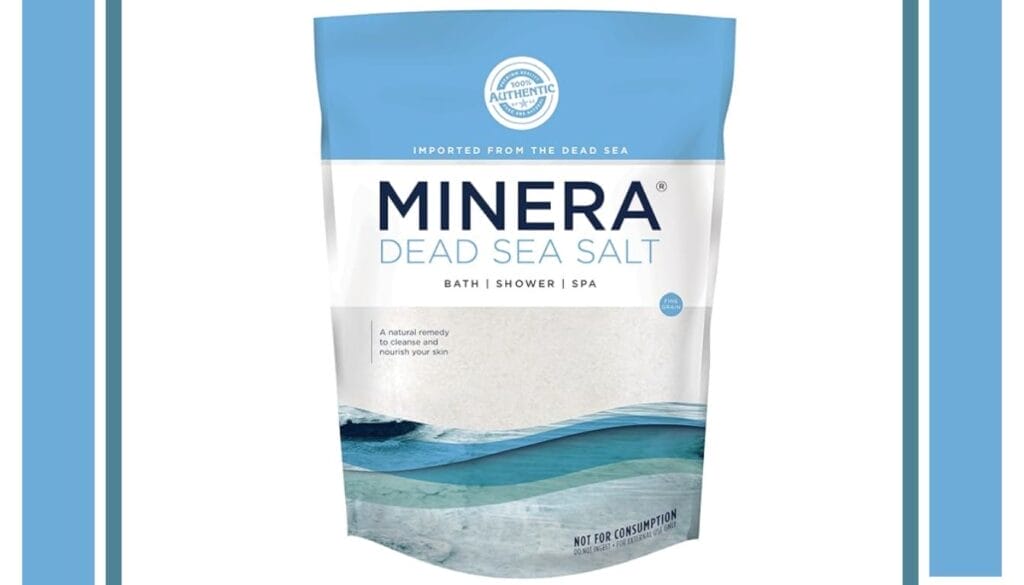
Product Features:
- Premium Quality Bath Salt: Harvested from the mineral-rich waters of the Dead Sea’s southern end, this salt offers spa-quality skincare at home.
- Fine Grain (0-1.7mm): Easily dissolves in warm water for a soothing and relaxing bath or foot soak, perfect for stress relief and skin nourishment.
- 100% Pure & Natural: Contains no additives, blended only with natural minerals to retain all the beneficial elements the Dead Sea is famous for.
- Versatile Usage: Can be used in multiple ways – as a foot soak, to exfoliate when mixed with olive oil or body wash, or to add to a warm bath for overall relaxation.
- Skin Nourishing: Known for its ability to cleanse, hydrate, and revitalize your skin, leaving it feeling smooth and refreshed after every use.
Pros:
- Natural Skin Nourishment: Provides much-needed hydration and stress relief with each soak, helping to soothe irritated or dry skin.
- Spa-Like Quality: Brings the luxury of a Dead Sea spa directly to your home with pure, high-quality minerals.
- No Additives or Depletion: Unlike many Dead Sea salts on the market, this product is not mineral-depleted and hasn’t been blended with other salts, ensuring you get the full therapeutic benefits.
- Relieves Stress and Muscle Stiffness: Perfect for soothing tired muscles after a long day, providing a natural way to relax and unwind.
- Easy to Use: The fine-grain salt dissolves quickly, making it incredibly easy to incorporate into your daily self-care routine.
Cons:
- Not for Consumption: As this product is meant solely for external use (baths and skincare), it’s important to keep it out of reach of children and pets.
- Might Need a Larger Amount: Depending on how much salt you prefer in your bath, a large handful might be needed to achieve the desired effect, especially for larger bathtubs.
2. Le Marinier French Sea Salt Grey Coarse:
If you’re on the hunt for a mineral-rich, natural, and authentic sea salt, the Le Marinier French Sea Salt Grey Coarse is a product that should definitely be on your radar. Hand-harvested from the pristine French ocean marshes, this salt offers much more than just flavor. Let’s dive into its features, pros, and cons, and explore why it might be the answer to the question, Is Celtic Salt Better Than Himalayan Salt?
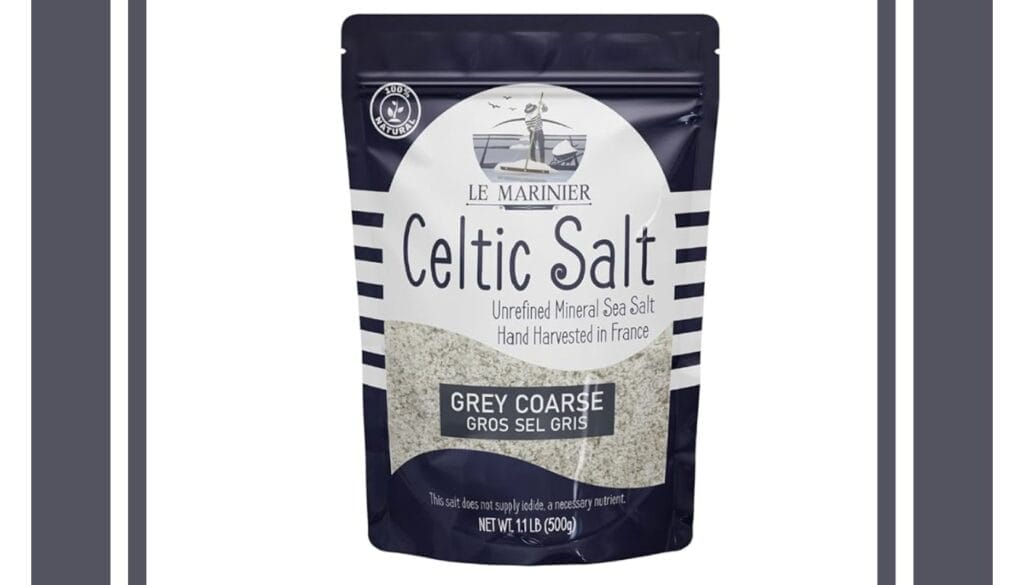
Product Features
- Authentic French Sea Salt: Hand-harvested in the French ocean marshes using traditional methods that have been practiced for over a thousand years. This salt is untouched by additives or chemicals, delivering pure, natural sea salt.
- 100% Natural and Unrefined: The salt is unprocessed and toxin-free, produced through natural evaporation by the sun and wind, leaving you with the finest mineral-rich sea salt.
- Rich Mineral Composition: Contains vital minerals and micronutrients, including magnesium, calcium, potassium, and iron. These minerals are essential for maintaining hydration and supporting overall health.
- Exquisite Flavor and Texture: Known for its complex, nuanced flavor, this salt offers a subtler, more sophisticated salty taste compared to regular table salt. It’s slightly moister, adding a unique texture to dishes.
- Grey Coarse Sea Salt: The large crystals of this grey coarse sea salt provide a delightful crunchy texture when used as a finishing touch on various dishes like meats, fish, vegetables, and seafood.
- Kosher Certified: It meets kosher standards, making it suitable for those following a kosher diet.
Pros of Le Marinier French Sea Salt Grey Coarse
- 100% Natural and Chemical-Free: The salt is unrefined and harvested using traditional methods, ensuring no chemicals or additives are present. Perfect for those who prefer natural, organic products.
- Mineral-Rich: The salt contains essential minerals like magnesium and calcium, which are important for overall health, hydration, and maintaining a healthy electrolyte balance.
- Delicious Flavor: The subtle and complex flavor makes it ideal for seasoning dishes without overpowering them. Its nuanced taste can elevate any meal.
Cons of Le Marinier French Sea Salt Grey Coarse
Price: As with many high-quality salts, Le Marinier French Sea Salt may come at a premium price compared to regular table salt. However, its mineral composition and flavor make it worth the investment for those seeking a natural, health-conscious alternative.
Coarse Texture May Not Be Suitable for All Recipes: The larger crystals are great for finishing dishes, but they may not dissolve as quickly in recipes that require smooth seasoning.
Final Verdict: Celtic Sea Salt vs. Dead Sea Salt?
In the ultimate showdown of Celtic Sea Salt vs. Dead Sea Salt, it’s clear that both salts have distinct benefits, and your decision will largely depend on your intended use.
- If you’re looking for a mineral-rich salt to use in the kitchen or as a finishing salt to enhance your meals, Celtic Sea Salt is the ideal choice. Its unrefined nature and rich mineral profile make it an excellent substitute for regular table salt.
- If your primary goal is to improve your skin health or alleviate muscle pain and joint inflammation, Dead Sea Salt is the best option. It’s particularly beneficial for those suffering from psoriasis, eczema, and other skin conditions.
Both salts are incredibly valuable, so choosing between Celtic Sea Salt vs. Dead Sea Salt ultimately depends on whether you need a salt for cooking or therapeutic purposes.
Can I use Dead Sea Salt for cooking?
Dead Sea Salt is not recommended for cooking due to its bitterness and high mineral content. It’s best used for bath salts and skin care.
Is Celtic Sea Salt healthier than regular table salt?
Yes, Celtic Sea Salt contains a richer mineral profile compared to table salt and is less refined, making it a healthier alternative.
Can Dead Sea Salt help with psoriasis?
Yes, Dead Sea Salt is famous for its ability to alleviate psoriasis and eczema. It soothes the skin and helps reduce inflammation.
Conclusion: Celtic Sea Salt vs. Dead Sea Salt
Whether you choose Celtic Sea Salt or Dead Sea Salt, both offer unique health benefits and versatile uses. From enhancing the flavors of your meals to improving your skin and muscle health, these salts have a lot to offer. Consider your specific needs—whether it’s culinary, therapeutic, or skincare—and choose the salt that fits best into your wellness routine.
Product | What It Looks Like | Where To Buy It |
Minera Dead Sea Salt, 100% Pure & Natural, 5 lbs |  | |
Le Marinier French Sea Salt Grey Coarse |  |

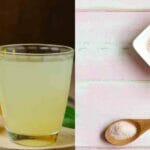




0 Comments